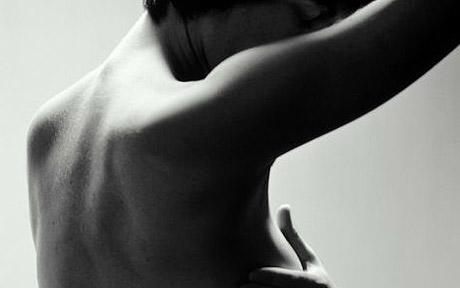“Beholding beauty with the eye of the mind, he will be enabled to bring forth, not images of beauty, but realities.” ~ Plato
A cancer diagnosis is a scary thing. As if the physical trauma and exhaustion weren’t enough on their own, there’s the atrocious emotional toll that the person has to manage and cope with. But when it comes to “breast cancer,” that is another story altogether.
It doesn’t only attack women’s health, but it steals away their femininity. Many women say that they feel ashamed of their bodies, that their sexuality has been compromised. They see mastectomy scars as a disfigurement that serves as a painful reminder of what they have to live with for the rest of their lives.
Story-telling through words, pictures and other creative forms of expression can be effective ways of dealing with the trauma that mastectomy leaves and of helping with the healing process. The art-making process is therapeutic in and of itself—indeed art heals— but tattoo artists at P.INK took both art-therapy and tattoo-making to a whole new level. It seems that mastectomy tattoos are now the talk of the town.
Breast Tattoos
Women who have gone through mastectomy are now choosing tattoos over reconstruction. P.INK exists to connect, inspire and empower breast-cancer survivors with tattoos and to help them get their bodies back. Although mastectomy is a necessity for survival, it leaves women ashamed of their bodies, and tattoos help them to gain strength and healing from it.
Women choose tattoos over reconstruction for many reasons. Some cite that breast cancer is the biggest fight of their lives, and that tattoos help them to tell that story of survival, as it’s a story that should be acknowledged rather than hidden. Others have gone through enough physical trauma and they don’t want to go through another operation.
Using tattoos as a way to deal with difficult emotional experiences is not a new thing. Procedures of body modification, such as tattooing, have a long history and are well-known from various cultures. In the 80’s, for example, punk and gay movements picked up tattoos as a form of protest against a conservative society.
Women, Body Art and Personal Reclamation
Many authors argued that tattoos impose psychological and personal meaning for their bearers. Michael M. Atkinson, Associate Professor in the Faculty of Kinesiology Physical Education at the University of Toronto and author of “Tattooed: The Sociogenesis of a Body Art” (2003), explored the meaning of tattoos, especially from women’s perspective, and found that female tattoos have various functions, including cultural rebellions as well as personal reclamation and self-definition.
He suggested that body tattooing might enable traumatized individuals to handle personal experiences. Tattoos can resemble attempts to attain mastery and control over the body. He reported that women who had been abused, for example, created a new understanding of the injured parts and reclaimed possession of their bodies.
“The reclamation of the body plays an important role, assigning tattoos a self-healing effect.” (Atkinson, 2002).
And obviously, this is not just an “academic” point of view. For example, here’s what breast-cancer survivor Inga Duncan Thornell had to say about this:
“I can’t remember the last party when I didn’t end up in the bathroom or spare bedroom with someone, or half a dozen somebodies, showing my tattoo!”
Inga Duncan Thornell’s breast tattoo, by Tina Bafaro.
You Are In Charge
The aftermath of mastectomy is a terrible loss, no arguing about that. But these brave women—and so many like them—are realizing that their personal identity, their will to live and enjoy life, is truly as strong and vibrant as they decide it is.
They may have lost a body part, and an important one at that, but they transformed the loss into an empowering symbolic artwork, using their own bodies as an enduring canvass, and putting a whole new spin on the phrase “tit for tat” —-or for “tattoo!”
Love elephant and want to go steady?
Sign up for our (curated) daily and weekly newsletters!
Editor: Renée Picard
Photos: archives/courtesy of author


 Share on bsky
Share on bsky






Read 1 comment and reply